Refurnishing & Revisiting the Farnsworth House

We recently learned about an exhibition at Mies van der Rohe's Farnsworth through our friends at PAGODA RED, since they had recently placed furniture at the house and photographed the installations for the exhibition. They generously shared the story of the exhibit and the house's history with CGN.
By PAGODA RED
Designed by Mies van der Rohe in the late 1940s, the Farnsworth House in Plano, Illinois distills Mies’ modernist ideals into a clear expression of uncluttered structure. Over the years, it’s become shorthand for Miesian “less is more” design — so much so that the more nuanced story behind the home has been eclipsed by its iconic stature.
“Too often, we gravitate towards the simple and familiar narrative when the real story is much richer and more challenging,” says Scott Mehaffey, Executive Director of the Farnsworth House.
A new exhibition, Edith Farnsworth Reconsidered, centers the story not in the architect but in the homeowner — a remarkable kidney research physician, violinist, poet and translator who commissioned the house as a weekend retreat and lived in it for nearly 20 years. Despite having her name attached to the house, Farnsworth’s legacy was undercut by a legal battle over escalating fees (lost to Mies) and, in Mehaffey’s words, “the fact she was a brilliant, driven and successful professional woman during a very misogynistic era in history.” This exhibit seeks to recast Edith’s story and — by extension, the house itself — in a new light.
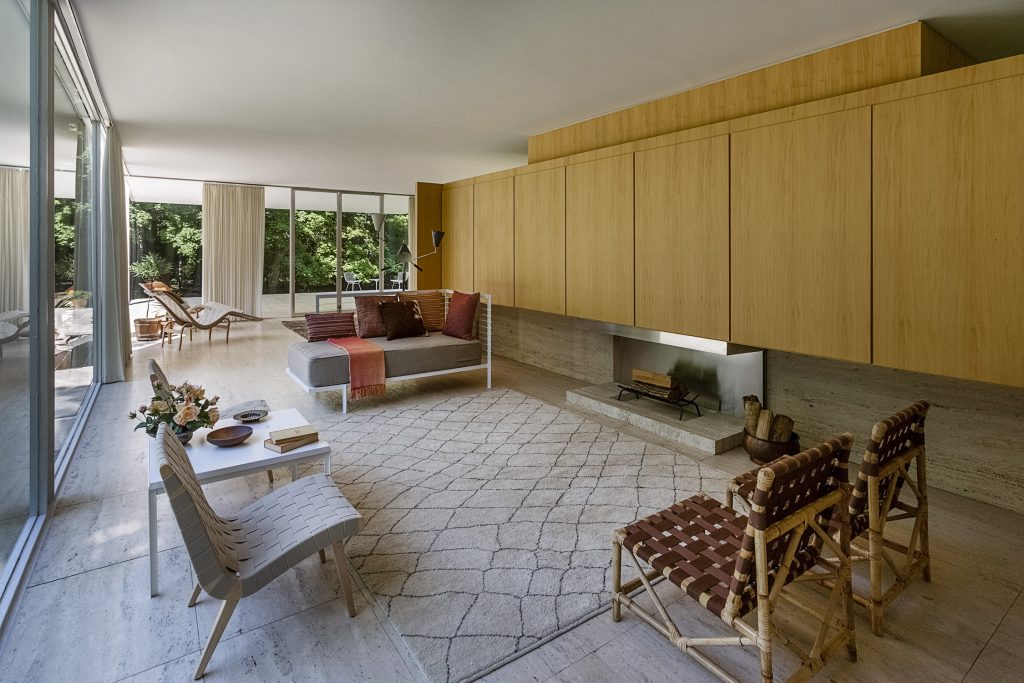
Normally furnished with Mies’ famous Barcelona Stools and Brno Chaises, the house has been redecorated to reflect the furniture that Farnsworth chose. Reticent to fill her home with pieces that Mies designed for offices and public spaces, Farnsworth wrested control of the interiors.
“Edith made it clear from the start that she preferred to select her own furnishings,” explains Mehaffey, “but Mies wouldn’t listen, which put her in a delicate position.”
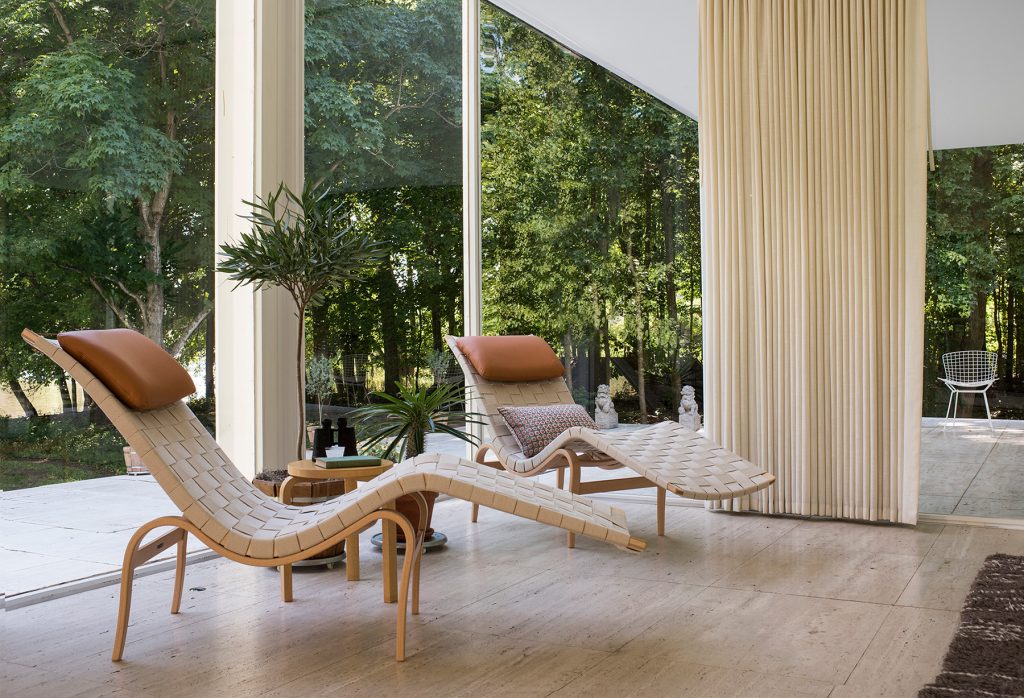
When Mies’ office called to arrange delivery for a shipment of metal furniture, Farnsworth refused, explaining that she hadn’t ordered it. Instead, Farnsworth enlisted the help of her friend Kitty Baldwin-Weese to select Scandinavian and Italian Modern style pieces, many of which came from the Baldwin-Kingrey store.
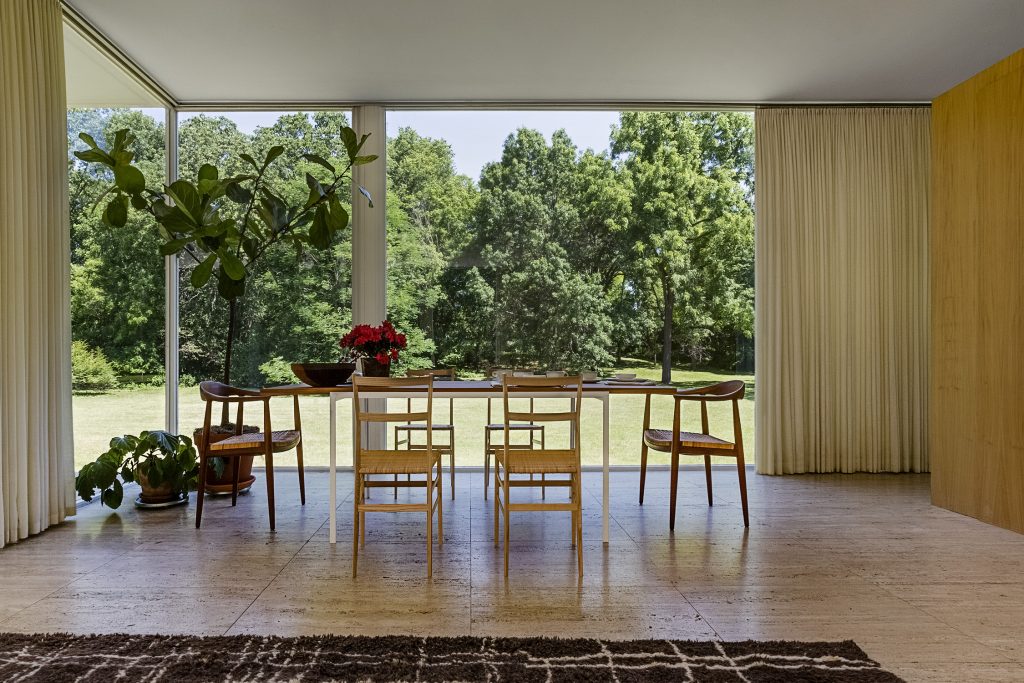
Farnsworth also collected Chinese antiquities and installed a pair of Fu Dogs outside the house. To recreate the effect, Mehaffey chose a pair of intricately carved stone lions from PAGODA RED. Once used to protect a 19th century Chinese courtyard, the pair now guards the terrace of the Farnsworth House. “We might conjecture that they reminded Edith of her beloved dogs, which always accompanied her on her trips out to Plano,” explains Mehaffey, “and they imbue a certain humor that makes the place less sterile and lonely.”
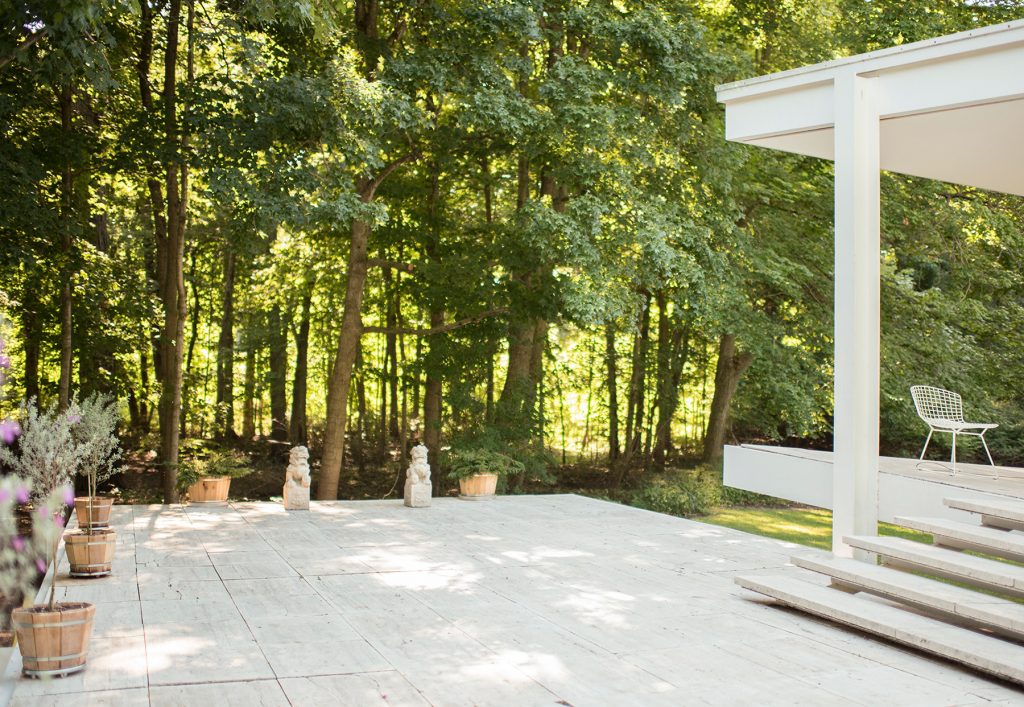
It’s unknown where Farnsworth’s interest in Asian art stemmed from, but her collection survives at the Art Institute — which owns several of her Chinese bronze and stoneware vessels — and the University of Chicago, where her original Fu Dogs stand at the entrance to the Cochrane-Woods Art Center. She also collected contemporary photography and furnishings by Jens Risom, Florence Knoll, and Franco Albini among other designers.
“The layering of antiquities and modern furnishings shows sophistication and is often missing in contemporary interiors,” says Mehaffey, “So through the lens (or perhaps guise) of interior decor, this project opens the door to a greater conversation and ongoing exploration of modernism at the Farnsworth House and helps us examine Mies in the broader context of his contemporaries.”
Personal details bring Farnsworth’s story to life. An Olivetti typewriter sits atop a writing desk alluding to her work as a poet and translator, and a violin sits near the door, where she might have played it to catch summer breezes. In the bedroom, a plinth displays an architectural object from PAGODA RED in a nod to Farnsworth’s collection of Chinese antiques.
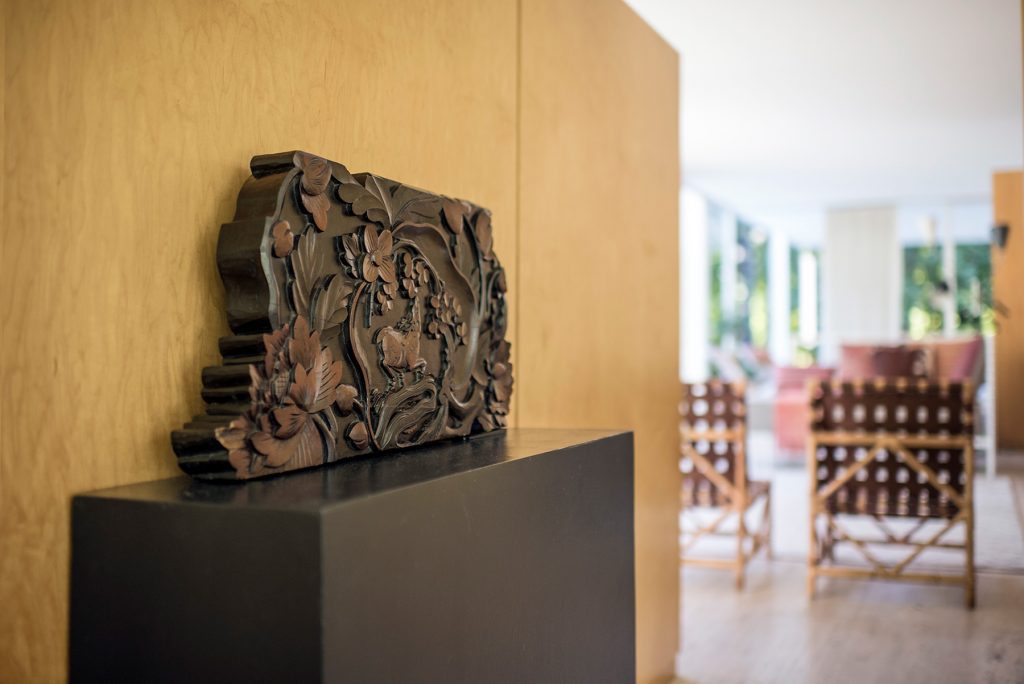
Surrounded by lawns with views to the treeline, the house invites the natural world inside, as both Mies and Farnsworth intended. In neutral colors and a range of textures, Farnsworth’s furnishings soften the austerity of the architecture without detracting from the views. It’s easy to imagine Farnsworth taking walks with her dogs and enjoying a nightcap on the terrace.
“She purposely kept it a quiet place as her life in Chicago was so busy and demanding,” Mehaffey says. “I hope this exhibition brings renewed appreciation to the Farnsworth House and fosters greater awareness of Edith Farnsworth and her many accomplishments – but also reminds us that history is never fully written and that we can sometimes find ourselves in the lives and choices of people who came before us.”
Making the exhibition accessible for those who can’t visit in person, the Farnsworth House has posted a virtual reality tour as well as historic photos and online exhibition guides. Still, seeing the site in person remains the best way to experience it, and the house is offering limited tours as well as “Grounds Only” tickets.
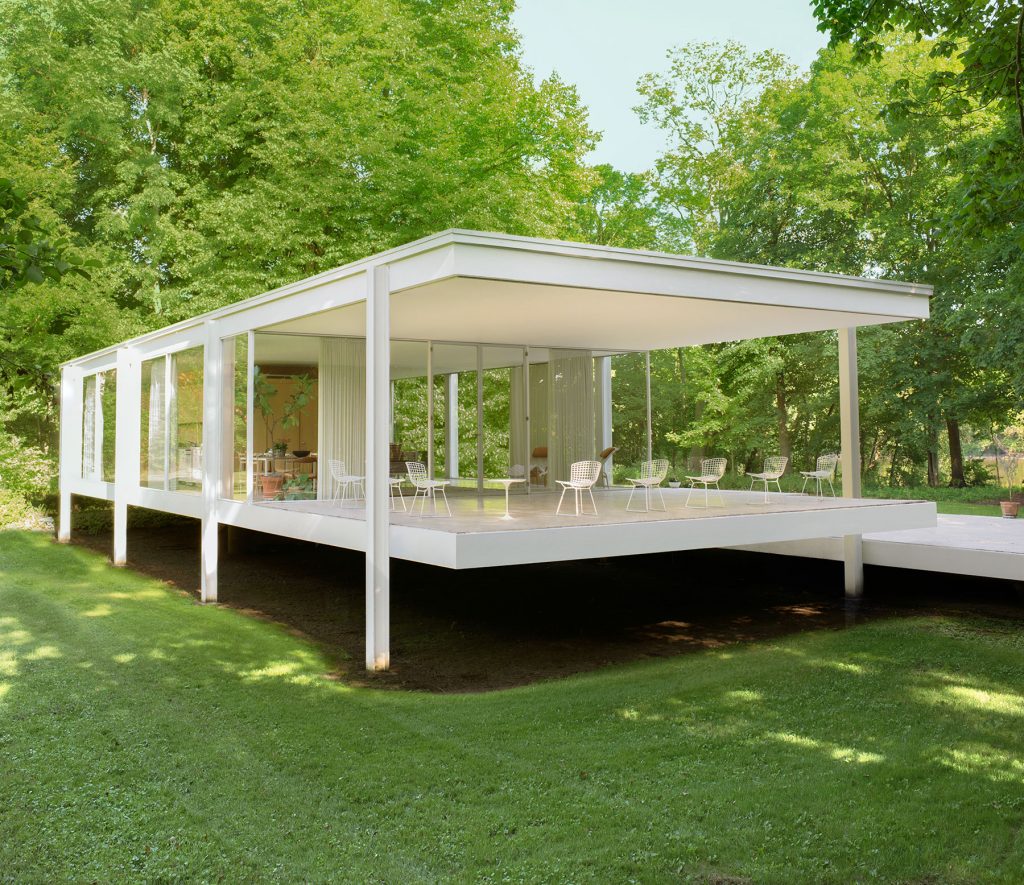
The Farnsworth House is open Wednesday to Sunday from 9:30 to 3:30, offering limited guided tours of up to 12 people at 10:00am, 12:00pm and 2:00pm. Self-guided tours of the grounds are available for half the price, and picnicking and hiking are allowed throughout the site. As state regulations may change, it’s best to visit farnsworthhouse.org for up-to-date information.
Special thanks to Scott Mehaffey for generously sharing Edith Farnsworth’s story. To learn more, visit the online exhibition.
Read PAGODA RED's blog here.






